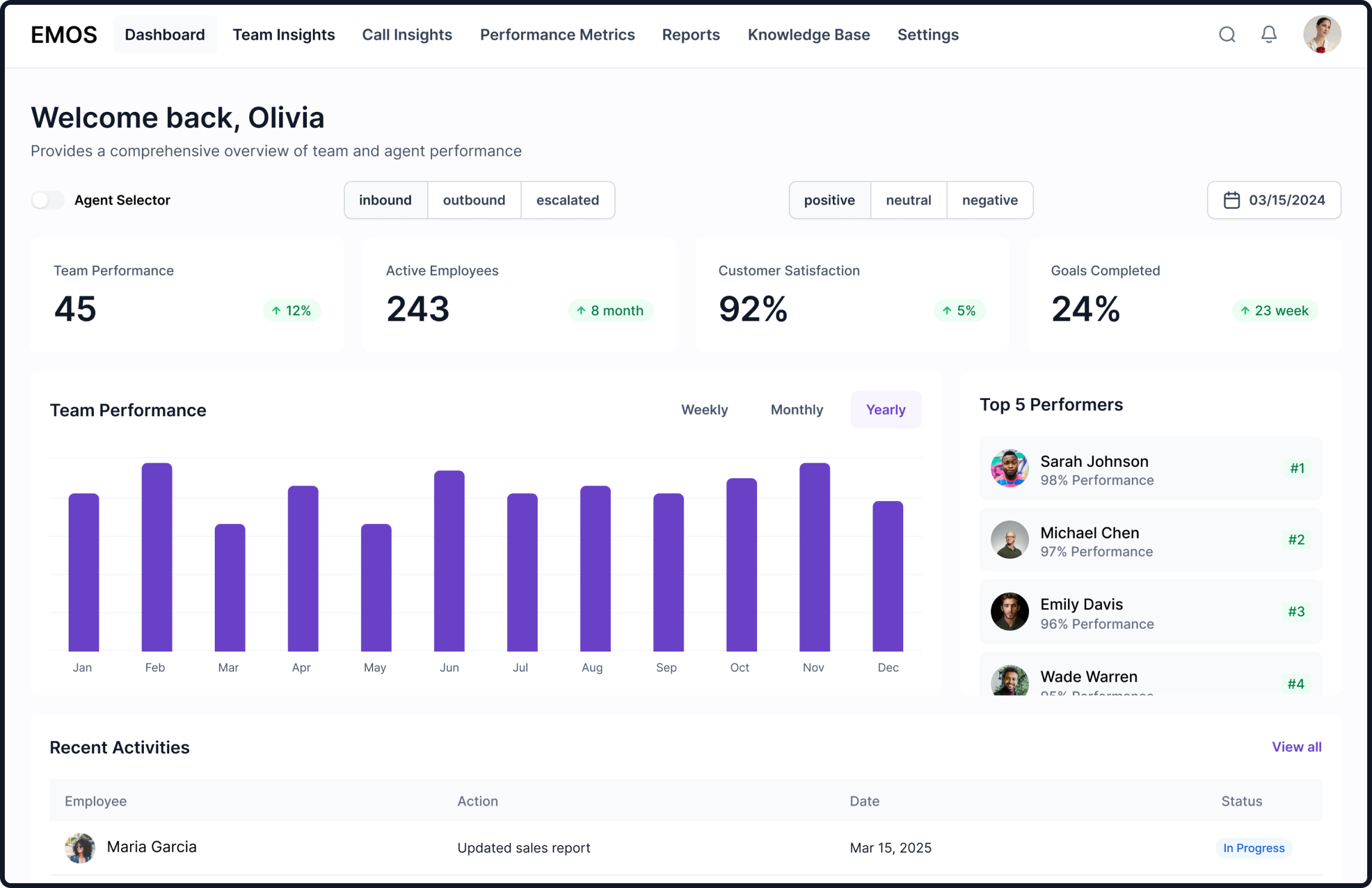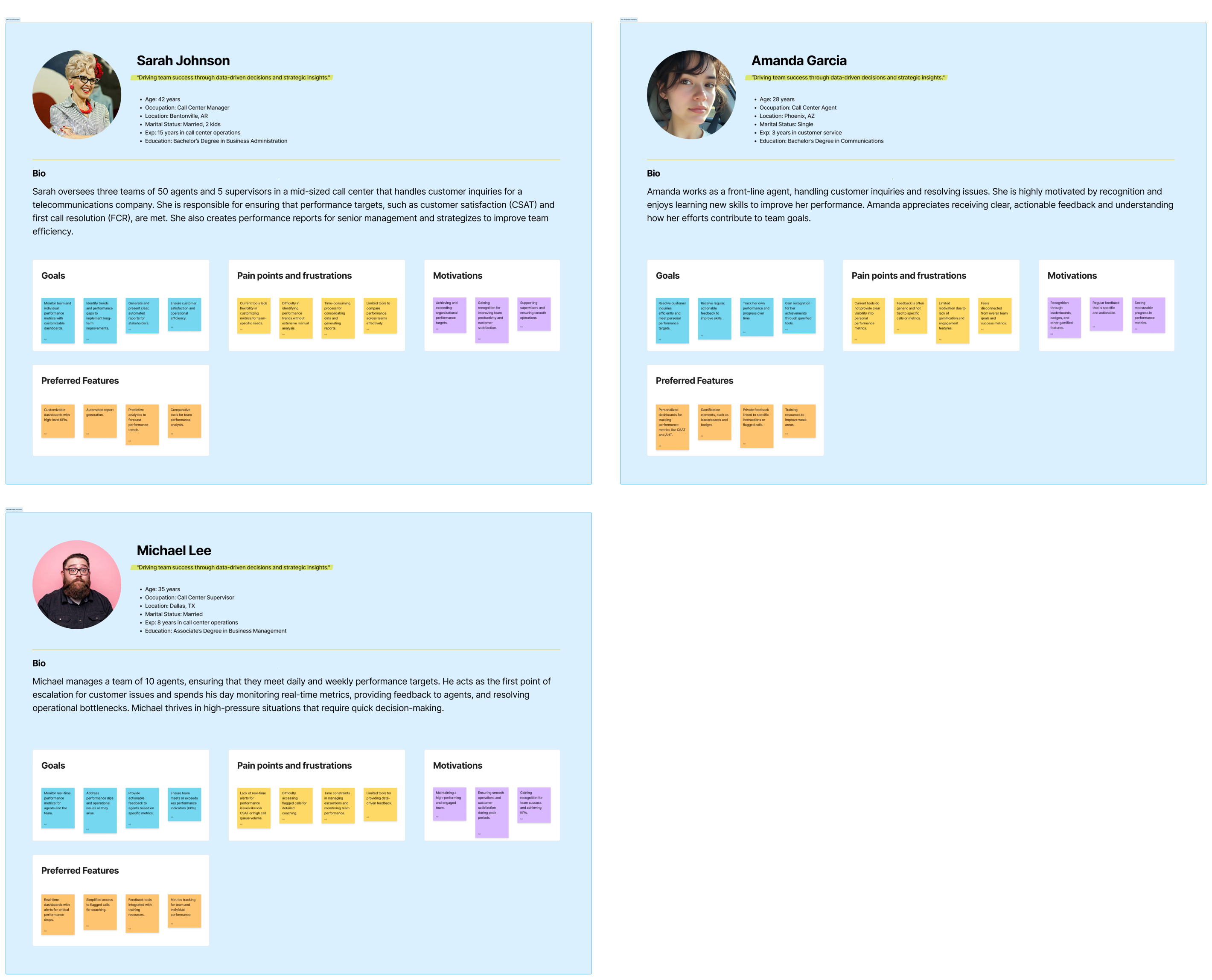
Project Overview
Objective
To design a performance tracking tool for call center managers and supervisors that delivers actionable insights, enables real-time monitoring, and provides feedback mechanisms to improve agent performance and enhance customer satisfaction.
Target Users
- Managers: Focused on high-level analytics, trends, and strategic decision-making.
- Supervisors: Require real-time monitoring, immediate intervention capabilities, and coaching tools.
- Agents: Need clear, actionable feedback and motivational tools like gamification to improve performance.
Outcome
A comprehensive tool that offers real-time dashboards, performance analytics, call insights, and gamification features, resulting in improved resolution rates, enhanced customer satisfaction, and greater employee engagement.
Discovery Phase
Problem Statement
Call centers face challenges in tracking employee performance due to the limitations of existing tools. Supervisors struggle with real-time monitoring, managers find it difficult to analyze trends effectively, and agents lack clear feedback and motivation, leading to inefficiencies and low customer satisfaction.
Stakeholder Interviews
Summarized findings from interviews with key stakeholders:
- Managers: Insights into their need for high-level analytics and trend tracking
- Supervisors: Requirements for real-time monitoring and coaching tools.
- Agents: Their expectations for feedback mechanisms and gamification.
User Personas
Developed personas to represent managers, supervisors, and agents, highlighting their specific needs and pain points.

User Journey Mapping
Mapped the journeys for each user group
- Managers: Reviews team performance, identifies trends, and prepares reports.
- Supervisors: Monitors real-time performance, addresses flagged issues, and coaches agents.
- Agents: Tracks daily performance, reviews feedback, and engages with gamified elements.

Information Architecture
The Information Architecture (IA) for a Call Center Dashboard organizes features and information to ensure a seamless and efficient user experience. This IA focuses on empowering call center agents, supervisors, and managers by providing easy access to critical tools and data.

Design Phase
Wireframes
Created wireframes for Dashboard, Call Insights, Call Analysis & Reports. Iterated designs based on usability testing feedback.

Usability Testing
- 3 Managers
- 2 Supervisors
- 5 Agents
- Managers needed customizable metrics.
- Supervisors requested real-time alerts.
- Agents appreciated gamification but wanted private feedback options.
Final Design
The final design featured a real-time dashboard with key metrics such as average resolution time, customer satisfaction, and call volume, allowing users to filter data by date range, team, or individual performance.

Impact
The tool delivered measurable improvements
- 15% reduction in average call resolution time.
- 20% increase in customer satisfaction scores within three months.
- Higher employee engagement through gamified metrics and leaderboards.
- Improved efficiency in coaching, with supervisors spending 30% less time analyzing performance.
Learning and Next Steps
Learnings
- Customization is key: Users appreciate the ability to tailor dashboards and metrics to their needs.
- Real-time feedback fosters immediate improvement.
Next Steps
- Introduce predictive analytics to forecast team performance trends.
- Expand features for multilingual and cross-geographical teams.
- Develop a mobile app for on-the-go performance monitoring.
- Add integration with HR systems for tracking agent development over time.